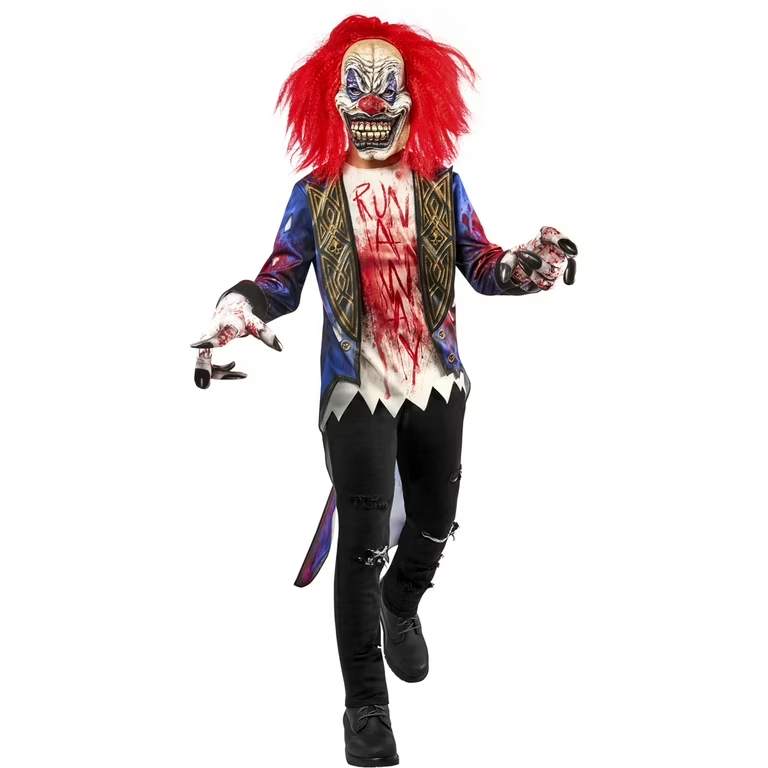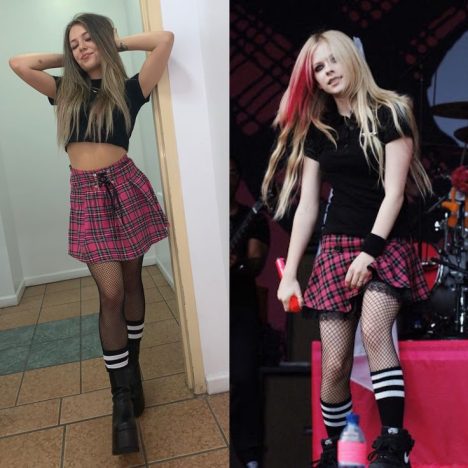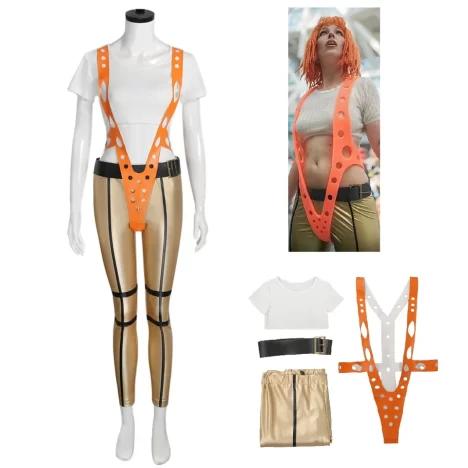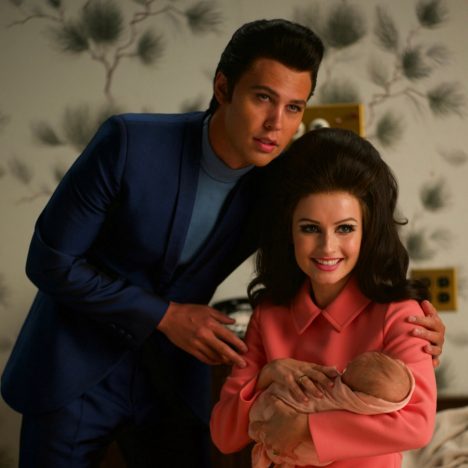The image of a clown has long been associated with laughter, joy, and childlike wonder. Yet, there is a darker side to this seemingly innocent character. The creepy clown costume has captured the public imagination, inspiring fear, unease, and even outright panic. In this article, we will explore the history of the creepy clown, the cultural factors that contribute to its fearfulness, and the impact it has had on popular culture.
Contents
The Origins of the Clown
The origins of the clown can be traced back to ancient civilizations. In Rome, the mime was a type of street performer who often wore exaggerated makeup and costumes. These performers would use physical comedy, slapstick, and satire to entertain the crowds. Over time, the mime evolved into the modern-day clown, with its distinctive white face, red nose, and colorful outfit.
The Creepy Clown’s Ascent to Infamy
While the clown has traditionally been a symbol of happiness, there have been instances throughout history where the character has been associated with fear and darkness. In the Middle Ages, jesters were often seen as court fools and were sometimes treated with cruelty or contempt. This association with the grotesque and the absurd may have contributed to the development of the creepy clown archetype.
The 20th century saw a resurgence of interest in the creepy clown. In the 1970s, a series of clown-related attacks occurred in the United States, leading to widespread fear and anxiety. These incidents, often involving individuals wearing clown masks, helped to solidify the creepy clown’s reputation as a sinister figure.

Cultural Factors Contributing to Fear of Clowns
Several cultural factors contribute to the fear of clowns. One such factor is the uncanny valley theory, which suggests that people find objects or beings that are almost human, but not quite, unsettling. The exaggerated features of the clown, such as the large red nose and painted face, can create a sense of unease and discomfort.
Additionally, the clown’s ambiguous nature can be unsettling. While clowns are often portrayed as harmless and childlike, their exaggerated expressions and often hidden faces can make them seem mysterious and unpredictable. This ambiguity can lead to a sense of unease and fear.
The Creepy Clown in Popular Culture
The creepy clown has become a popular figure in popular culture, appearing in movies, television shows, and video games. One of the most iconic examples is the Joker, a DC Comics villain who is often depicted as a clown. The Joker’s twisted sense of humor and violent tendencies have made him a terrifying and enduring symbol of evil.
Other notable examples of creepy clowns in popular culture include Pennywise the Dancing Clown from Stephen King’s IT and the Killer Clowns from the 1988 horror film Killer Klowns from Outer Space. These characters have helped to reinforce the idea of the clown as a sinister and dangerous figure.
Instances of creepy clowns causing public panic
The phenomenon of creepy clown sightings has repeatedly caused public panic throughout history. These incidents, often fueled by social media and fear-mongering, have led to widespread anxiety and unease. Here are some notable instances of creepy clowns causing public panic:
Other Notable Instances
- 1970s Clown Attacks: In the 1970s, a series of clown-related attacks occurred in the United States, contributing to the development of the creepy clown archetype. These incidents helped to solidify the association between clowns and fear.
- 2017 Clown Threats: In 2017, several schools in the United States received threats from individuals claiming to be armed clowns. The threats forced schools to close and increased security measures.
Factors Contributing to Public Panic
Several factors contribute to the public panic caused by creepy clown sightings:
- Social Media: The rapid spread of information on social media platforms like Twitter and Facebook can quickly amplify fear and misinformation.
- Fear of the Unknown: The ambiguous nature of the creepy clown, combined with the unpredictability of their actions, can create a sense of unease and fear.
- Media Hype: News outlets often sensationalize stories about creepy clowns, contributing to public anxiety.
While the majority of creepy clown sightings are likely harmless pranks or hoaxes, the fear and panic they can cause are real. It is important to approach such incidents with caution and to rely on official sources of information.v

The Impact of the Creepy Clown
The creepy clown has had a significant impact on popular culture. It has inspired fear, anxiety, and even panic, leading to real-world consequences. The clown-related attacks of the 1970s, for example, had a lasting effect on public perception of the character.
However, the creepy clown has also had a positive impact. It has served as a source of inspiration for artists, writers, and filmmakers, leading to the creation of some truly terrifying and memorable characters. Additionally, the fear of clowns has helped to raise awareness about the importance of mental health and the need for support for those who may be struggling.
The creepy clown costume has not only captured the public imagination but has also become a popular subject for social media trends. These trends have often led to both fear and fascination, contributing to the enduring appeal of this iconic character.
Early Social Media Trends
- 2013 Clown Sightings: One of the earliest social media trends involving creepy clowns was the 2013 “clown sightings” phenomenon. Rumors of individuals dressed as clowns lurking in public spaces circulated widely online, causing widespread fear and anxiety. The trend was fueled by social media platforms like Twitter and Facebook, where users shared their experiences and speculated about the intentions of these mysterious figures.
- 2016 Clown Panic: In 2016, a new wave of clown sightings swept across the United States and other parts of the world. This time, the sightings were accompanied by reports of threats and even attacks. The trend quickly went viral on social media, with users sharing photos, videos, and personal accounts of their encounters with creepy clowns. The 2016 clown panic highlighted the power of social media to amplify fear and misinformation.
The Role of Social Media Influencers
Social media influencers have played a significant role in shaping the perception of the creepy clown costume. Many influencers have capitalized on the trend by creating content featuring creepy clown-themed challenges, pranks, or makeup tutorials. While this content can be entertaining, it can also contribute to the normalization of the creepy clown as a harmless character, potentially eroding the fear associated with it.
The Impact of Viral Challenges
Viral challenges involving creepy clown costumes have become increasingly popular on platforms like TikTok and Instagram. These challenges often involve users dressing up as creepy clowns and performing various acts, such as scaring unsuspecting people or participating in dance-offs. While these challenges can be entertaining, they can also be harmful. For example, some challenges have encouraged users to engage in risky or dangerous behaviors, potentially leading to physical injury or legal consequences.
The Dark Side of Viral Trends
The popularity of creepy clown-related content on social media has also given rise to a darker side. Some individuals have used social media to spread misinformation about clown sightings or to make threats. This has created a climate of fear and uncertainty, particularly for children and vulnerable populations.
The creepy clown costume has become a recurring theme in social media trends, captivating audiences and inspiring both fear and fascination. While these trends can be entertaining, they can also have negative consequences, such as spreading misinformation or encouraging risky behaviors. It is important to approach social media content related to creepy clowns with a critical eye and to be aware of the potential risks associated with these trends.

The creepy clown costume is a complex and fascinating phenomenon. While it has been associated with laughter, joy, and childlike wonder, it has also inspired fear, unease, and even panic. The cultural factors that contribute to the fear of clowns, as well as the character’s appearance in popular culture. Have helped to solidify its reputation as a sinister and dangerous figure.
Despite its negative connotations, the creepy clown has also had a positive impact. It has served as a source of inspiration for artists and writers. And has helped to raise awareness about mental health issues. As long as humans continue to be fascinated by the dark side of human nature. The creepy clown will likely remain a popular and enduring symbol of fear.




